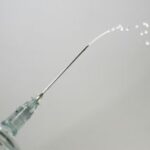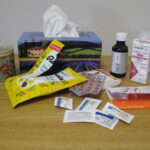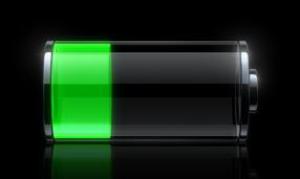Pertussis known as whooping cough which is extremely contagious respiratory disease which is called by the bacteria Bordetella Pertussis. It brings on uncontrollable and severe coughing, that possibly can cause breathing problems.
After the attack of several coughs, most usually the person need to take some deep breaths which forms the whooping sound. Whooping cough can continue for up to ten weeks and even longer.
Infants and children are particularly vulnerable to developing health problems from this cough. Currently, there are two vaccines available for this cough. One is for children called DtaP and the other for adolescents and adults called Tdap.
The Centers for Disease Control and Prevention report that there 30 to 50 million cases of this cough each year along with about 300,000 deaths nationwide each year.
Current cases reported now in the state of California are at 3,311, seven times greater increase than the exact time last year where there were only 501 cases reported states California Department of Health. The closest number of record cases occurring in California was in 1958 with 3,837 cases that were reported.
Currently the most reported cases are California with over 3,000 cases being reported and the state is fearing it will be a state wide epidemic. The other states with most reported cases Arizona, Idaho, Iowa, Michigan, South Carolina, upstate New York, Wisconsin and Oregon.
No one persons seems immune to this disease. Any person and any age can run the risk of contrasting this disease. We are now facing an epidemic which can become nationwide. In California, last year only 219 cases had been reported for the whole year. The numbers now have increased dramatically.
It is highly recommend that infants, children and persons with chronic health conditions become vaccinated. Infants that are just to young to be vaccinated yet run the highest risk among all persons. It is also a known fact that the vaccine is not one hundred percent effective. Even if you have been vaccinated you still have the chance of contracting the cough.
Whooping cough is transmitted from droplets that occur from sneezing or coughing. Households which are susceptible to whooping cough contact is at the range of 80 to 90 percent chance.
Beginning Stages (act like your common cold)
Running nose and sneezing
Mild coughing
Low fever or none at all
After one to two weeks:
Vomiting
Extreme fatigue
Sweating
Cough which produces the “whoop” sound (this occurs in about only half the cases)
Face turns red or blue
Bringing up thick phlegm
Infants younger than six months
Do not display cough
Gasping or gagging
Breathing stops
Seizures
Become extremely tired
Important Notice
If you believe that your child may have whooping cough, immediately call your healthcare practitioner. Do not wait for symptoms to become worse. If any infant or child is having a difficult time catching their breath or becomes tired from coughing, go to emergency room right a way, do not hesitate.
Best rule here is if anyone who after a coughing spell experiences vomiting, turning blue or red, inhale with a “whooping” sound, see your healthcare practitioner immediately.
A lot of persons do recover from the whooping cough. However, health issues can occur from the harsh coughing spells. Issues that include bruised or broken ribs, abdominal hernias and broken blood vessels in the skin or the white areas of your eyes.
Infants, particularly under six months of age, can suffer complications and they can be more severe in nature. These Include: ear infections, pneumonia, slowed breathing or no breathing, dehydration, seizures and brain damage. Due to the fact infants and toddlers are at the greatest risk of complications they usually receive treatments in the hospital where they can be monitored.
Healthcare practitioner can have a difficult time diagnosing whooping cough when it appears in early stages. This is mainly in part due to the fact it does resemble conditions such as respiratory illness, cold, flu and bronchitis. Sometimes health practitioners can make the diagnoses by your symptoms and just listening to your breathing functions. When they cannot make a determination positively tests are needed to be done. These tests are nose or throat cultures, blood and X-rays.
Most of the time these treatments are for older children and adults.
Conventional
Antibiotics in which eliminate the bacteria that has caused the cough. Erythromycine which can aide in helping the symptoms disappear quickly. Unfortunately, when diagnosed in the later stages antibiotics have no effect. However, they still may be administered to stop the disease from spreading to other persons. Sometimes if a person has the cough antibiotics may also be given to the entire household.
Also, cough expectorants have little to no effect on the cough, therefore, they should be disregarded.
Home Care
Get plenty of rest. A cool and dark room is recommend.
Substantial amounts of fluids such as juice, water and soup.
Consume smaller meals to help with avoiding vomiting after coughing.
Cool mist vaporize with ease the lungs and help to loosen secretions in the respiratory system.
Warm shower or bath can help clear lungs and provide easier breathing.
Keep home clear of irritants like tobacco smoke that can irritate lungs.
Acupuncture and Chinese Herbs
It has been noted that Chinese medicine is very effective in treating whooping cough. You will need to find a Chinese medicine practitioner as the formulas for are custom made based upon symptoms, stage of cough, age of person. Make sure the practitioner you choose is experienced in Chinese herbal medicines.
Acupuncture
The World Health Organization recognized acupuncture treatments for whooping cough in 2003. Acupuncture is said to reduce the symptoms of the disease.
These remedies are simply to help aide the course of antibiotics. Some herbs consist of red clover tea, Santonica tablets or lozenges and wild cherry bark infusion syrup.
Supplements recommended are Vitamins A, C, beta carotene and zinc.
Aromatherapy
Adding a few drops in cold mist humidifier to help ease lungs and improve breathing consist of camomile, camphor, lavender, peppermint, thyme and eucalyptus.
Sources:
Medical News Today
State of Michigan Department of Health and Human Services
Examiner
CDC
Breezy Mama
Dynamic Chiropractic
Encyclopedia of Alternative Medicine







